#Indian history.
Text
#Riteish Deshmukh#Raja Shivaji#Chatrapati Shivaji Maharaj#Maratha empire founder#Maharashtra’s greatest warrior#historical action drama#Jio Studios#Mumbai Film Company#Genelia Deshmukh#Jyoti Deshpande#Santosh Sivan#Ajay and Atul#Akshay Kumar#Mahesh Manjrekar#Sandeep Singh#Bollywood#Indian cinema#historical films#period drama#Indian history.
0 notes
Text
Vintage Photos of Queer Couples of Color

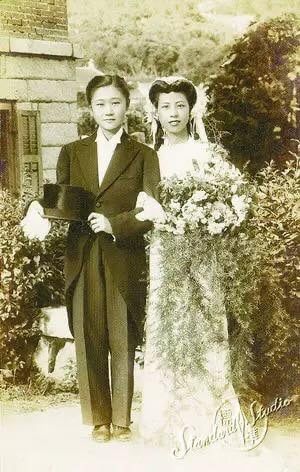

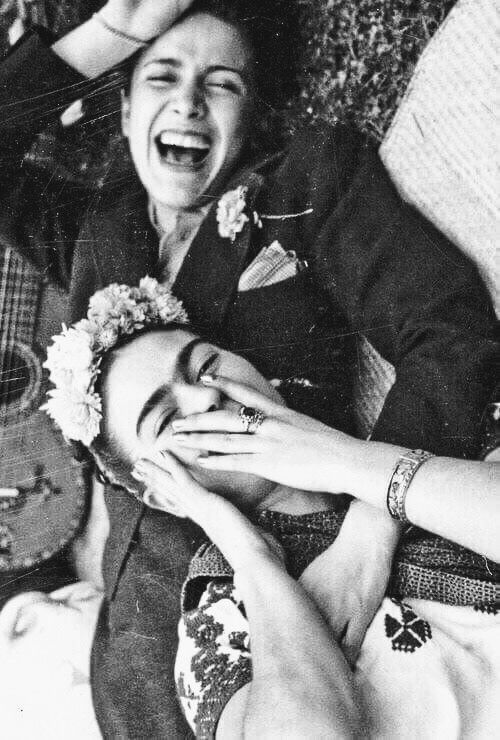
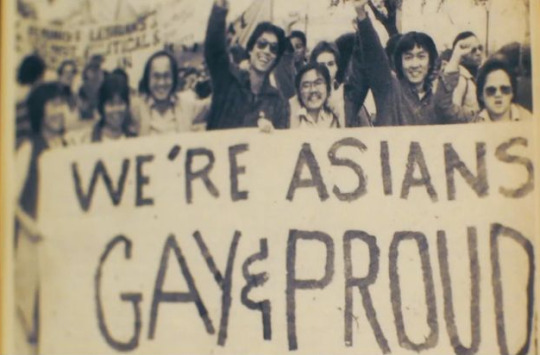
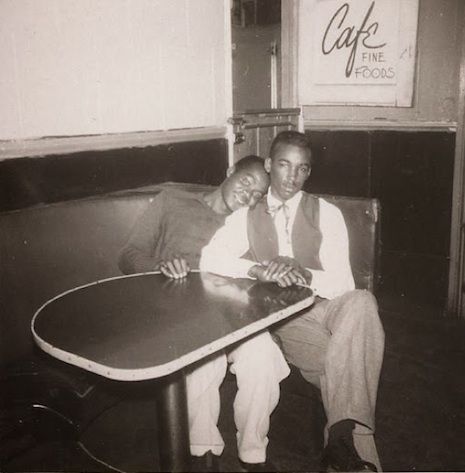


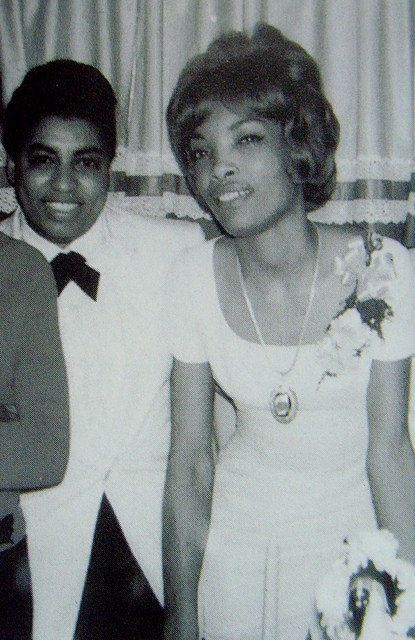

#queer#sapphic#lesbian#wlw#mlm#mlm post#mlm positivity#wlw yearning#wlw love#wlw positivity#queer history#black lesbian#gay man#black queer#black women#indian#desi#asian#lgbt pride#lgbtqia#lgbtq#lgbtq community#gay
19K notes
·
View notes
Text

The ship's mascot, a Persian kitten, finds a quiet spot in a special hammock. Aboard HM Indian Sloop Godavari, August 1943
#naval history#ship's cat#persian kitten#hm indian sloop godavari#1943#age of steam#ship's cat sunday
1K notes
·
View notes
Text
Emerald Spectacles from India, c. 1620-1660 CE: the lenses of these spectacles were cut from a single 300-carat emerald, and it was believed that they possessed mystical properties

These eyeglasses are also known by the name "Astaneh-e ferdaws," meaning "Gate of Paradise," based on the symbolic associations between the color green and the concept of spiritual salvation/Paradise. That symbolism (which is rooted in Islamic tradition) was especially popular in Mughal-era India, where the spectacles were made.

The lenses were crafted from two thin slices of the same emerald. Together, the lenses have a combined weight of about 27 carats, but given the precision, size, and shape of each lens, experts believe that the original emerald likely weighed in excess of 300 carats (more than sixty grams) before it was cleaved down in order to produce the lenses. The emerald was sourced from a mine in Muzo, Colombia, and it was then transported across the Atlantic by Spanish or Portuguese merchants.
Each lens is encircled by a series of rose-cut diamonds, which run along an ornate frame made of gold and silver. The diamond-studded frame was added in the 1890s, when the original prince-nez design was fitted with more modern frames.
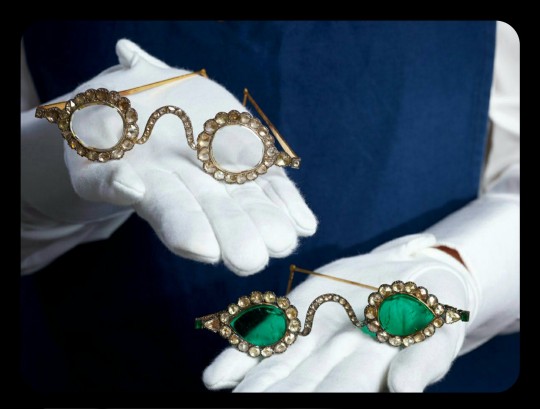
The emerald eyeglasses have long been paired with a second set of spectacles, and they were almost certainly commissioned by the same patron. This second pair is known as "Halqeh-e nur," or the "Halo of Light."
The Halo of Light features lenses that were made from slices of diamond. The diamond lenses were cleaved from a single stone, just like the emerald lenses, with the diamond itself being sourced from a mine in Southern India. It's estimated that the original, uncut diamond would have weighed about 200-300 carats, which would make it one of the largest uncut diamonds ever found.

The lenses are so clear and so smoothly cut that it sometimes looks like they're not even there.
Both sets of spectacles date back to the mid-1600s, and it's generally believed that they were commissioned by a Mughal emperor or prince. The identity of that person is still a bit of a mystery, but it has been widely speculated that the patron was Shah Jahan -- the Mughal ruler who famously commissioned the Taj Mahal after the death of his wife, Mumtaz Mahal. Shah Jahan did rule as the Mughal emperor from about 1628 to 1658.
The emerald and diamond lenses may have been chosen for symbolic, sentimental, and/or cultural reasons, or they may have been chosen simply because they're pretty and extravagant; the original meaning and purpose behind the design is still unclear. Experts do believe that the eyeglasses were designed to be worn by someone, though.
At times, it was believed that the spectacles had spiritual properties, like the ability to promote healing, to ward off evil, to impart wisdom, and to bring the wearer closer to enlightenment. Those beliefs are largely based on the spiritual significance that emeralds and diamonds can have within certain Indic and Islamic traditions -- emeralds may be viewed as an emblem of Paradise, salvation, healing, cleansing, and eternal life, while diamonds are similarly associated with enlightenment, wisdom, celestial light, and mysticism.
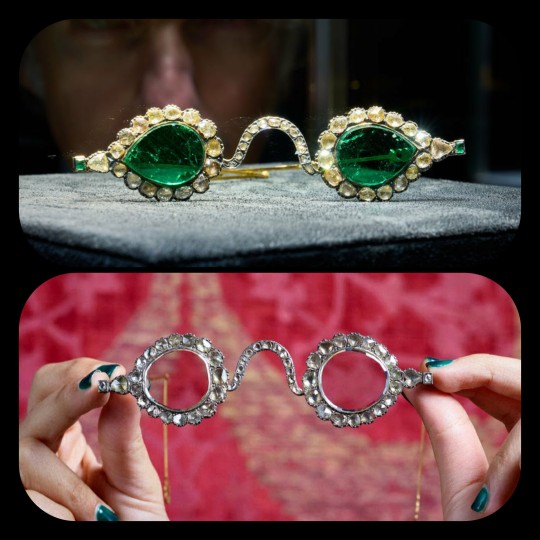
The Gate of Paradise and the Halo of Light were both kept in the collections of a wealthy Indian family until 1980, when they were sold to private collectors, and they were then put up for auction once again in 2021. They were most recently valued at about $2 million to $3.4 million per pair.
Sources & More Info:
Sotheby's: Mughal Spectacles
Architectural Digest of India: At Sotheby's auction, Mughal-era eyeglasses made of diamond and emerald create a stir
Only Natural Diamonds: Auspicious Sight & the Halqeh-e Nur Spectacles
The Royal Society Publishing: Cleaving the Halqeh-Ye Nur Diamonds
Gemological Institution of America: Two Antique Mughal Spectacles with Gemstone Lenses
Manuscript: From Satan's Crown to the Holy Grail: emeralds in myth, magic, and history
CNN: The $3.5 million Spectacles Said to Ward off Evil
BBC: Rare Mughal Era Spectacles to be Auctioned by Sotheby's
#history#archaeology#artifact#mughal#india#17th century#art#emerald#diamond#glasses#indian lore#islam#religion#mysticism#indian history#anthropology#spirituality#fashion
5K notes
·
View notes
Text

Colonialism
#Colonialism#colonialism#colonial violence#colonization#colonizers#colonial america#colonial history#colonialization#ausgov#politas#auspol#tasgov#taspol#australia#fuck neoliberals#neoliberal capitalism#anthony albanese#albanese government#usa news#usa politics#usa is a terrorist state#usa#american indian#american#america#palestine#israel#israhell#anti colonialism#anti colonization
729 notes
·
View notes
Text
In addition to my Monkey Man post from earlier, the always kind & sweet Aparna Verma (author of The Phoenix King, check it out) asked that I do a thread on Hijras, & more of the history around them, South Asia, mythology (because that's my thing), & the positive inclusion of them in Monkey Man which I brought up in my gushing review.
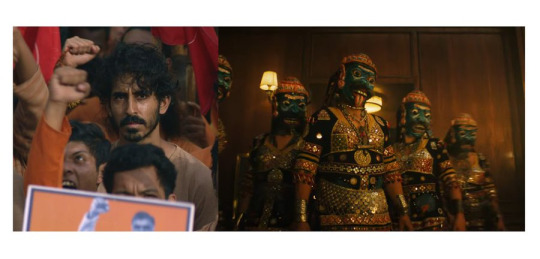
Hijra: They are the transgender, eunuch, or intersex people in India who are officially recognized as the third sex throughout most countries in the Indian subcontinent. The trans community and history in India goes back a long way as being documented and officially recognized - far back as 12th century under the Delhi Sultanate in government records, and further back in our stories in Hinduism. The word itself is a Hindi word that's been roughly translated into English as "eunuch" commonly but it's not exactly accurate.
Hijras have been considered the third sex back in our ancient stories, and by 2014 got official recognition to identify as the third gender (neither male or female) legally. Pakistan, Nepal, Bangladesh, and India have accepted: eunuch, trans, intersex people & granted them the proper identification options on passports and other government official documents.
But let's get into some of the history surrounding the Hijra community (which for the longest time has been nomadic, and a part of India's long, rich, and sometimes, sadly, troubled history of nomadic tribes/people who have suffered a lot over the ages. Hijras and intersex people are mentioned as far back as in the Kama Sutra, as well as in the early writings of Manu Smriti in the 1st century CE (Common Era), specifically said that a third sex can exist if possessing equal male and female seed.
This concept of balancing male/female energies, seed, and halves is seen in two places in South Asian mythos/culture and connected to the Hijra history.
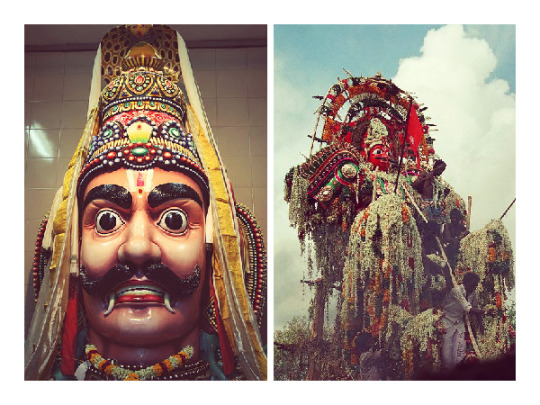
First, we have Aravan/Iravan (romanized) - who is also the patron deity of the transgender community. He is most commonly seen as a minor/village deity and is depicted in the Indian epic Mahabharata. Aravan is portrayed as having a heroic in the story and his self-sacrifice to the goddess Kali earns him a boon.

He requests to be married before his death. But because he is doomed to die so shortly after marriage, no one wants to marry him.
No one except Krishna, who adopts his female form Mohini (one of the legendary temptresses in mythology I've written about before) and marries him. It is through this union of male, and male presenting as female in the female form of Mohini that the seed of the Hijras is said to begun, and why the transgender community often worships Aravan and, another name for the community is Aravani - of/from Aravan.
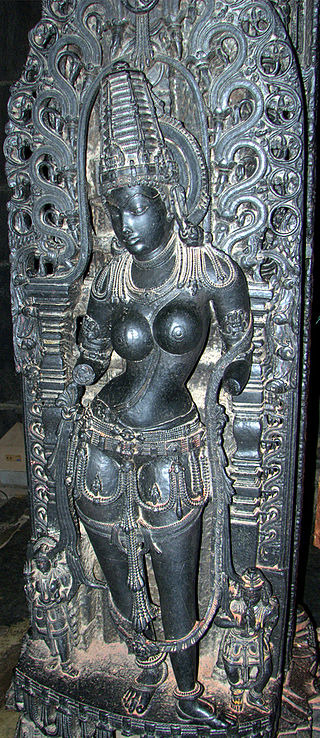
But that's not the only place where a gender non conforming divine representation can be seen. Ardhanarishvara is the half female form of lord Shiva, the destroyer god.
Shiva combines with his consort Parvarti and creates a form that represents the balancing/union between male/female energies and physically as a perfectly split down the middle half-male half-female being. This duality in nature has long been part of South Asian culture, spiritual and philosophical beliefs, and it must be noted the sexuality/gender has often been displayed as fluid in South Asian epics and the stories. It's nothing new.

Many celestial or cosmic level beings have expressed this, and defied modern western limiting beliefs on the ideas of these themes/possibilities/forms of existence.
Ardhanarishvara signifies "totality that lies beyond duality", "bi-unity of male and female in God" and "the bisexuality and therefore the non-duality" of the Supreme Being.
Back to the Hijra community.
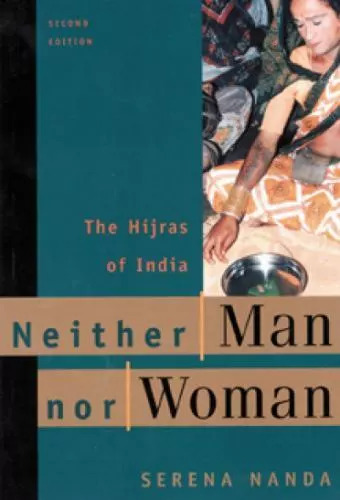
They have a complex and long history. Throughout time, and as commented on in the movie, Monkey Man, the Hijra community has faced ostracization, but also been incorporated into mainstream society there. During the time of the Dehli Sultanate and then later the Mughal Empire, Hijras actually served in the military and as military commanders in some records, they were also servants for wealthy households, manual laborers, political guardians, and it was seen as wise to put women under the protection of Hijras -- they often specifically served as the bodyguards and overseers of harems. A princess might be appointed a Hijra warrior to guard her.

But by the time of British colonialism, anti-Hijra laws began to come in place folded into laws against the many nomadic tribes of India (also shown in part in Monkey Man with Kid (portrayed by Dev Patel) and his family, who are possibly
one of those nomadic tribes that participated in early theater - sadly by caste often treated horribly and relegated to only the performing arts to make money (this is a guess based on the village play they were performing as no other details were given about his family).
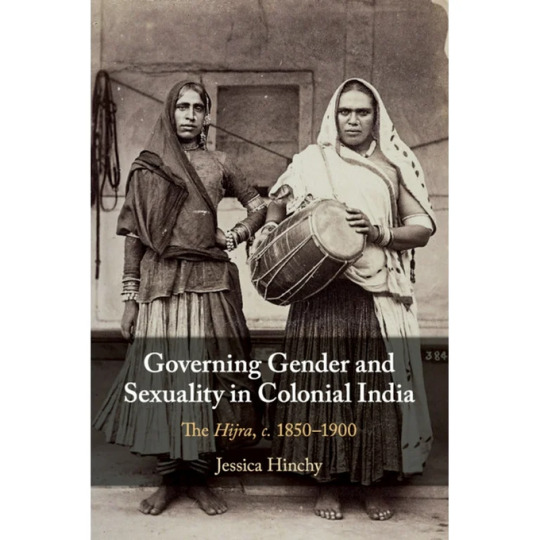
Hijras were criminalized in 1861 by the Indian Penal Code enforced by the British and were labeled specifically as "The Hijra Problem" -- leading to an anti-Hijra campaign across the subcontinent with following laws being enacted: punishing the practices of the Hijra community, and outlawing castration (something many Hijra did to themselves). Though, it should be noted many of the laws were rarely enforced by local Indian officials/officers. But, the British made a point to further the laws against them by later adding the Criminal Tribes Act in 1871, which targeted the Hijra community along with the other nomadic Indian tribes - it subjected them to registration, tracking/monitoring, stripping them of children, and their ability to sequester themselves in their nomadic lifestyle away from the British Colonial Rule.
Today, things have changed and Hijras are being seen once again in a more positive light (though not always and this is something Monkey Man balances by what's happened to the community in a few scenes, and the heroic return/scene with Dev and his warriors). All-hijra communities exist and sort of mirror the western concept of "found families" where they are safe haven/welcoming place trans folks and those identifying as intersex.
These communities also have their own secret language known as Hijra Farsi, which is loosely based on Hindi, but consists of a unique vocabulary of at least 1,000 words.
As noted above, in 2014, the trans community received more legal rights.
Specifically: In April 2014, Justice K. S. Radhakrishnan declared transgender to be the third gender in Indian law in National Legal Services Authority v. Union of India.
Hijras, Eunuchs, apart from binary gender, be treated as "third gender" for the purpose of safeguarding their rights under Part III of our Constitution and the laws made by the Parliament and the State Legislature. Transgender persons' right to decide their self-identified gender is also upheld and the Centre and State Governments are directed to grant legal recognition of their gender identity such as male, female or as third gender.
I've included some screenshots of (some, not all, and certainly not the only/definitive reads) books people can check out about SOME of the history. Not all again. This goes back ages and even our celestial beings/creatures have/do display gender non conforming ways.
There are also films that touch on Hijra history and life. But in regards to Monkey Man, which is what started this thread particularly and being asked to comment - it is a film that positively portrayed India's third sex and normalized it in its depiction. Kid the protagonist encounters a found family of Hijras at one point in the story (no spoilers for plot) and his interactions/acceptance, living with them is just normal. There's no explaining, justifying, anything to/for the audience. It simply is. And, it's a beautiful arc of the story of Kid finding himself in their care/company.
#hijra#trans representation#monkey man#dev patel#transgender#trans rights#trans rights are human rights#third sex#indian history#indian culture#colonialism#imperialism#south Asian mythos#South Asian myths#Aravan#Iravan#Mahabharata#hindu mythology#hindu gods#kali goddess#krishna#hindu mythology art#Ardhanarishvara#Shiva#Parvarti#sexuality#gender fluid#fluid sexuality#trans community#transgender rights
493 notes
·
View notes
Text
Wake up babe it's women's history month And we're celebrating
Indian Women in medicine

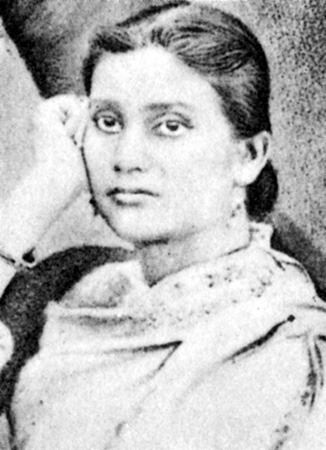
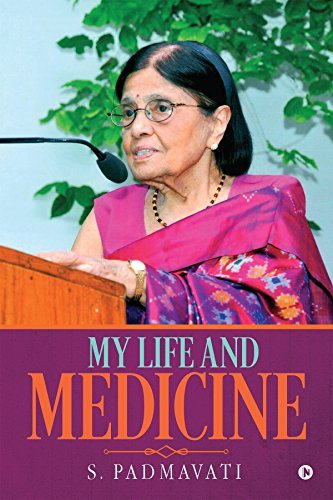



DR . ANANDIBAI GOPALRAO JOSHI ( first female doctor in India )
DR . KADAMBINI GANGULY ( first female doctor in Asia)
DR. S I PADMAVATI ( first female Indian cardiologist)
DR . MARY POONEN LUkOSE ( first lady surgeon of India)
DR . INDIRA HINDUJA ( gynaecologist who delivered India's first test tube baby )
DR . SAROJ CHOORAMANI GOPAL ( first woman M.ch paediatric surgeon )
#desiblr#desi tag#desi tumblr#desi culture#desi academia#indian academia#womens history#womens history month#medicine
465 notes
·
View notes
Text


early morning reading on 16th century maratha empire
#bookblr#studyblr#desiblr#indian academia#indian literature#dark academia#indian history#light academia#books#honey lemon#notes#digital notes#book blog#study blog#studyspo#maratha empire
2K notes
·
View notes
Text

During World War II, Maharaja Digvijaysinhji Ranjitsinhji of Nawanagar sheltered about 1,000 orphaned Polish children, providing them with food, shelter, and education. He reassured them by saying, "You may not have your parents, but I am your father now."
199 notes
·
View notes
Text
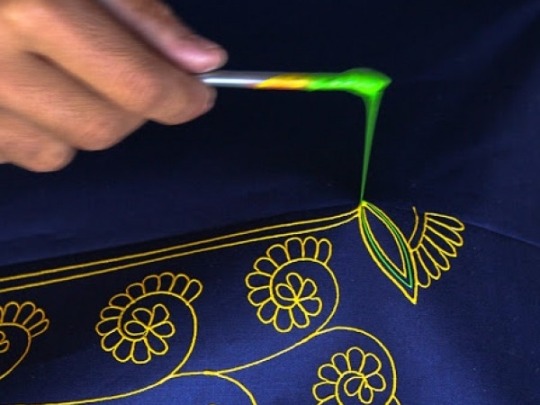







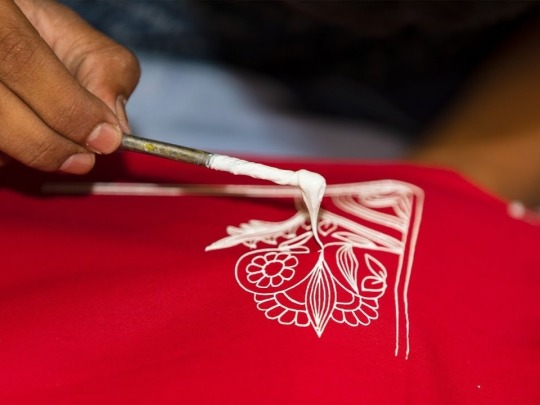

Rogan is an technique of cloth printing practiced in the Gujarat, Peshawar and Sindh regions of India and Pakistan. The word rogan has roots in both Persian and Sanskrit, meaning oil. In this craft, paint is made from boiled castor oil or linseed oil and vegetable dyes is laid down on fabric using a stylus.
The process of applying this oil based paint to fabric was developed among the Khatri community in Gujarat and the techniques of preparing and applying dyes was passed down in the family. As rogan printed cloth tended to be less expensive than other heavily embroidered garments but could still produce the illusion of embroidery, it was the wedding garment of choice for women from poorer families. The craft nearly died out in the late 20th century with the availability of cheaper and machine-made textiles. However, it is currently being revived mostly due to the efforts of the artist Abdulgafur Khatri and his family, who work tirelessly to spread awareness about Rogan art and teach it to young people, mostly young women from poor families in order to empower them by providing a means of livelihood as well as keeping the art of rogan alive.
1 / 2 / 3 / 4 / 5 / 6 / 7 / 8 / 9 / 10 / 11 | textile series
#ots#textiles#indian textiles#textile history#textile art#art printing#rogan art#gujarat#india#pakistan#south asia#desi tumblr#desiblr#sindh#peshawar#desi tag
1K notes
·
View notes
Text

#happy thanksgiving#thanksgiving#indigenous#native american#american indian#indian#history of thanksgiving
437 notes
·
View notes
Text

Emerald with the seal of Emperor Jahangir, Mughal Empire (India), 1018 AH (1609-1610 AD)
from The Museum of Islamic Art, Qatar
1K notes
·
View notes
Text
We made it to the moon for cheaper than NASA or Russia, or any colonial power ever has! (very positive)
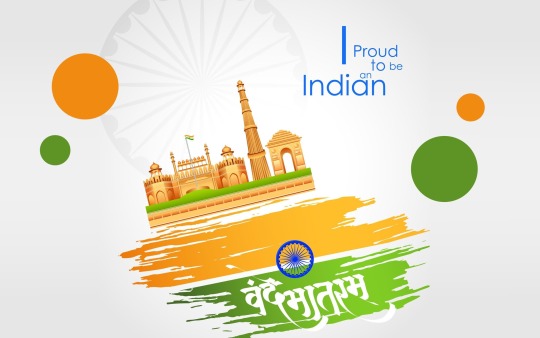
Take that Great Britain and screw you all colonizers and imperialism (extremely derogatory).
#meera.txt#India#chandrayaan3#history#bharat#proud to be indian#chandrayaanlaunch#brown history#current events#nasa#space travel#desiblr#being desi#desi tumblr#desi tag#this day in history#on this day in history#on this date#on this day#space program#the moon#moon landing#outer space#chandrayaan 3#chandrayaan -3#desi lgbt#desi queer#moon#happening now#colonialism mention cw
816 notes
·
View notes
Text
I’m an old school injun!
#black tumblr#black love#black indians#carnival season#mardi gras#black history#louisiana#black culture
245 notes
·
View notes
Photo

rip 1920′s Conrad Veidt fangirls, you would have loved 2020′s tumblr
#conrad veidt#the hands of orlac#the indian tomb#the cabinet of dr. caligari#horror#eroticism#dark eroticism#classic horror#film history#classic cinema#silent cinema#men#cesare the somnambulist#demon lover#my posts
2K notes
·
View notes
Text
Why Gandhi is a piece of shit and you should hate him.
Mohandas Karamchand Gandhi has been established in our history as a "Mahatma" which means "great soul"
This man is anything but that.
He is EVERYWHERE. He's on our currency, he's revered as a hero who saved India, and we have a mandatory holiday on October 2nd in honor of him.
If you didn't know, now you're going to get to know why he was a horrible human being. Let's begin.
This man managed to fool people Martin Luther King and Nelson Mandela (among many others) into thinking he was a good person.
Here is some of the shit he's done:
In 1903, when Gandhi was in South Africa, he wrote that white people there should be "the predominating race." He also said black people "are troublesome, very dirty, and live like animals."
Refused to have sex with his wife for the last 38 years of their marriage. He felt that in order to test his commitment to celibacy, he would have beautiful young women (including his own great niece) lie next to him naked through the night. His wife, whom he described as looking like a "meek cow" was no longer desirable enough to be a solid test.
Believed that Indian women who were raped lost their value as a human.
During Gandhi's time as a dissident in South Africa, he discovered a male youth had been harassing two of his female followers. Gandhi responded by personally cutting the girls' hair off, to ensure the "sinner's eye" was "sterilised". Gandhi boasted of the incident in his writings, pushing the message to all Indians that women should carry responsibility for sexual attacks upon them.
He argued that fathers could be justified in killing daughters who had been sexually assaulted for the sake of family and community honour.
Gandhi also waged a war against contraceptives, labelling Indian women who used them as whores.
He believed menstruation was a "manifestation of the distortion of a woman's soul by her sexuality".
On 6th April 1947, he gave a speech where he said, “ If the Muslims are out there slicing through Hindu masses to wipe out the Hindu race, the Hindus should say nothing and peacefully accept death”.
He hated the great Hindu rulers, especially Shivaji Maharaj. To please the Muslims, he banned the book named ShivBhaavani which correctly depicted Islam’s intolerance and fierce fundamentalism spread by it.
Refused his wife life-saving medication (for religious reasons), but those religious reasons all of a sudden no longer applied to him when he was in a similar position.
Started a fast unto death when Ambedkar asked for separate electorates for Dalits.
Gandhi left his ailing father on his deathbed, to sleep with his wife. The child born out of this copulation died in infancy. According to Gandhi, the death of this infant was the result of this evil karma.
Gandhi, even when he claimed to be the angel of non-violence, made no efforts to prevent the British from deploying Indian troops at various locations during World War II.
Kashmir was invaded by Pakistan in 1947, the brutal Pakistani army committed heinous crimes against Kashmiri Pandits including mass rape and mass killings consequently many Pandits were forced to flee to Delhi and other places. In one incident Pandits took refuge in an abandoned mosque in Delhi. Infuriated, Gandhi threatened to fast to death if the Pandits didn't leave. The Pandits were slaughtered in a communal riot as soon as they abandoned the mosques.
Criticized the Jews for defending themselves against the Holocaust because he insisted that they should have committed public mass suicide in order to "shame" the Germans instead of fighting back. His exact words were, "But the Jews should have offered themselves to the butcher's knife. They should have thrown themselves into the sea from the cliffs. As it is, they succumbed anyway in their millions."
And this is all from a simple Internet search compiled here. I wonder what else is hiding if I do a deep dive.
Thank you for coming to my TED talk.
#hinduphobia#hindublr#desiblr#antisemitism#history#india#gandhi#can you guys tell i hate him#indian history#british empire#tw rape#tw assault
358 notes
·
View notes